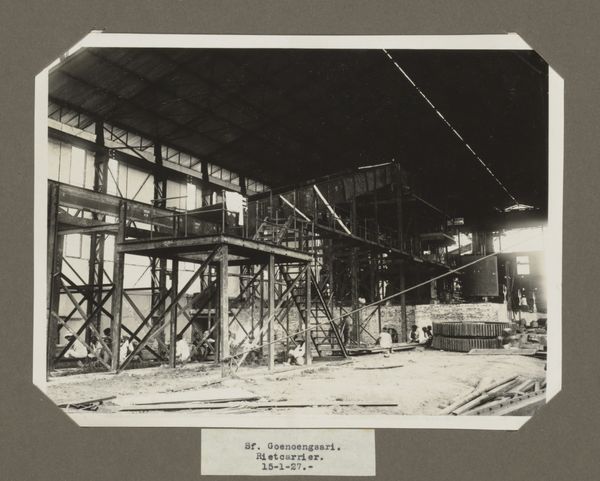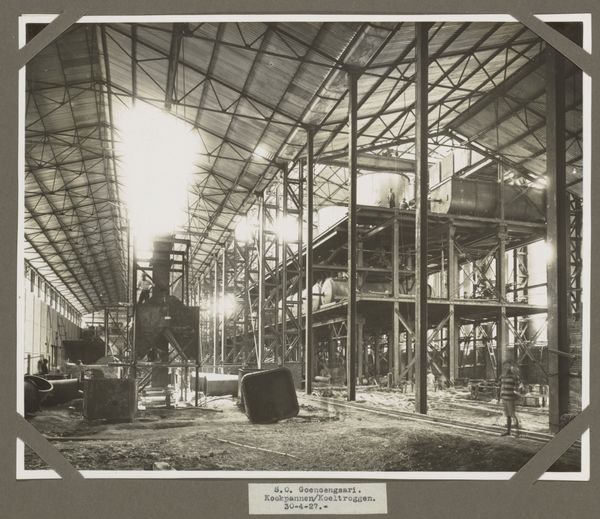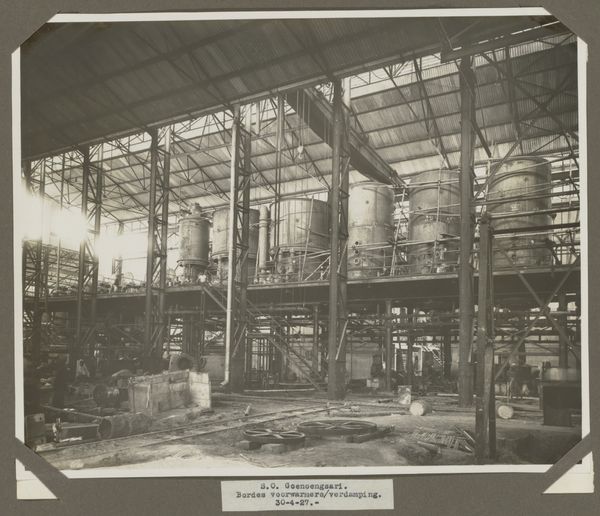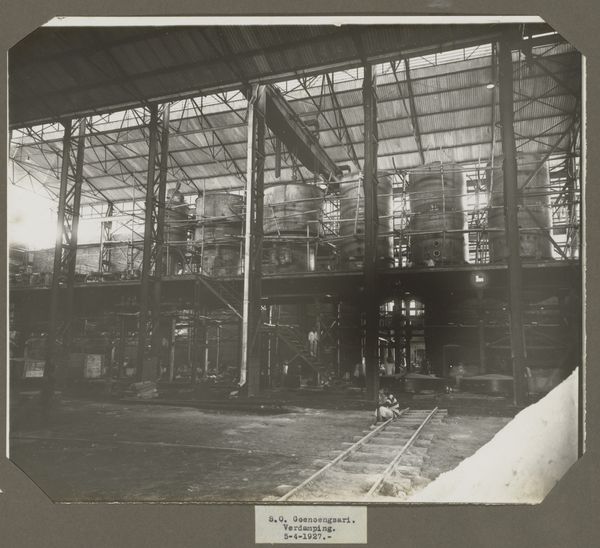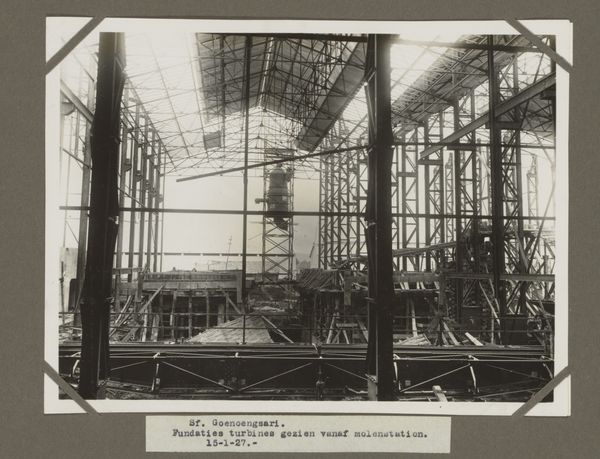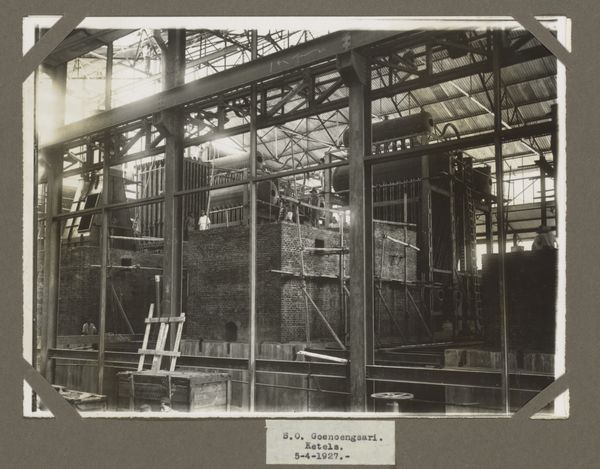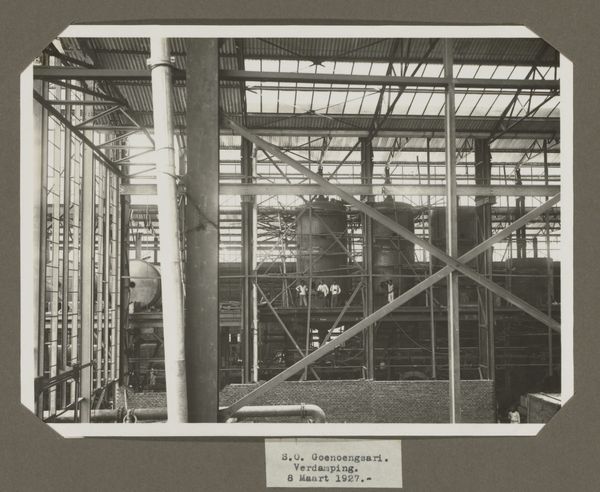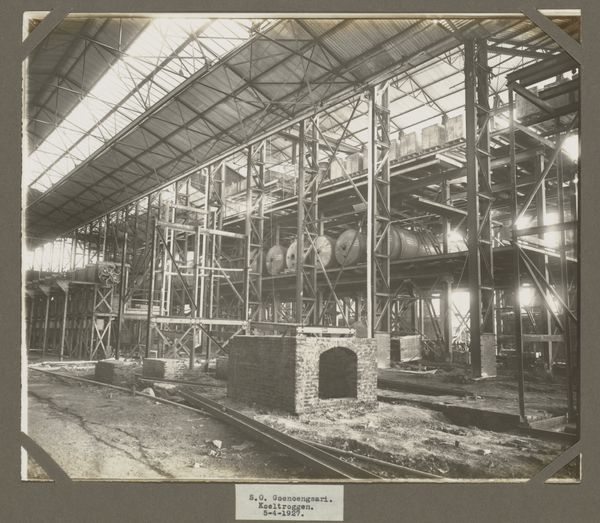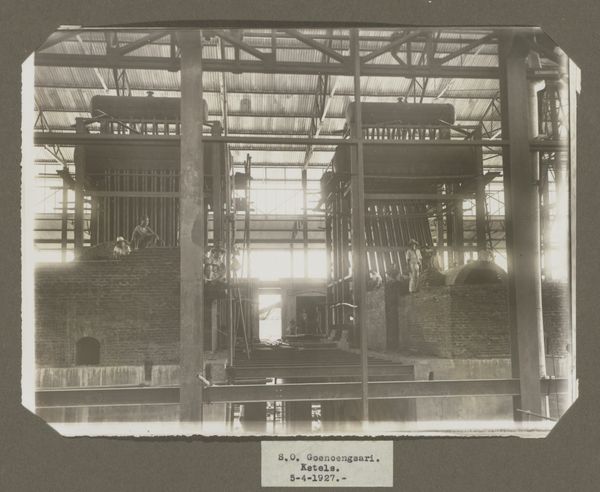
print, photography
#
historical design
# print
#
landscape
#
archive photography
#
photography
#
historical photography
#
constructionism
#
architectural proposal
Dimensions: height 157 mm, width 234 mm
Copyright: Rijks Museum: Open Domain
Curator: Looking at this print from 1927, we see a photograph titled "S.O. Goenoengsari. Turbinehuis met zicht op ketelhuis. 4-2-27." The Rijksmuseum holds this historical document. It seems to depict an industrial construction site. Editor: My first impression is a sense of immense scale and industry; the photograph gives off a feeling of stark practicality with its utilitarian subject. The scaffolding and skeletal architecture imply transformation and possibility. Curator: Yes, the visual language definitely aligns with the aesthetics of Constructionism. Observe how the industrial space is captured almost reverently, emphasizing its geometric forms and the potential for progress through engineering. It echoes the dynamism of the machine age, seen not as soulless but as emblems of a new world. Editor: It's all about the materials, isn't it? Look at the raw steel, the concrete—elements being assembled through manual labor. We get a snapshot of the actual making of infrastructure. And it prompts questions of who these laborers were and how their efforts were perceived within a colonial economic context. Curator: Exactly. The presence of laborers suggests not just physical effort but also the social structure inherent within these ambitious projects. Their almost diminutive scale next to the imposing girders further accentuates this dynamic. One wonders what dreams they held. Editor: I agree. It is an artifact of progress and process, simultaneously highlighting engineering prowess and the very human elements that built that world. This interplay gives a stark reminder of the realities of the Dutch East Indies and the means by which advancements came. Curator: Thinking about the title now, too... it's so straightforward, so informational, almost bureaucratic. Yet, hidden beneath that is this moment of potential, of building something grand, infused by cultural symbolism too; those building these cathedrals to industrialism must have held powerful collective imaginaries about the future. Editor: It definitely makes me reconsider my notion of the archive as static. It reveals dynamic tensions of colonial history in its structure and composition. Thanks. Curator: And thank you! It’s in considering images like this through diverse perspectives that we discover the richness held within archives and the material process involved in producing this layered legacy.
Comments
No comments
Be the first to comment and join the conversation on the ultimate creative platform.

